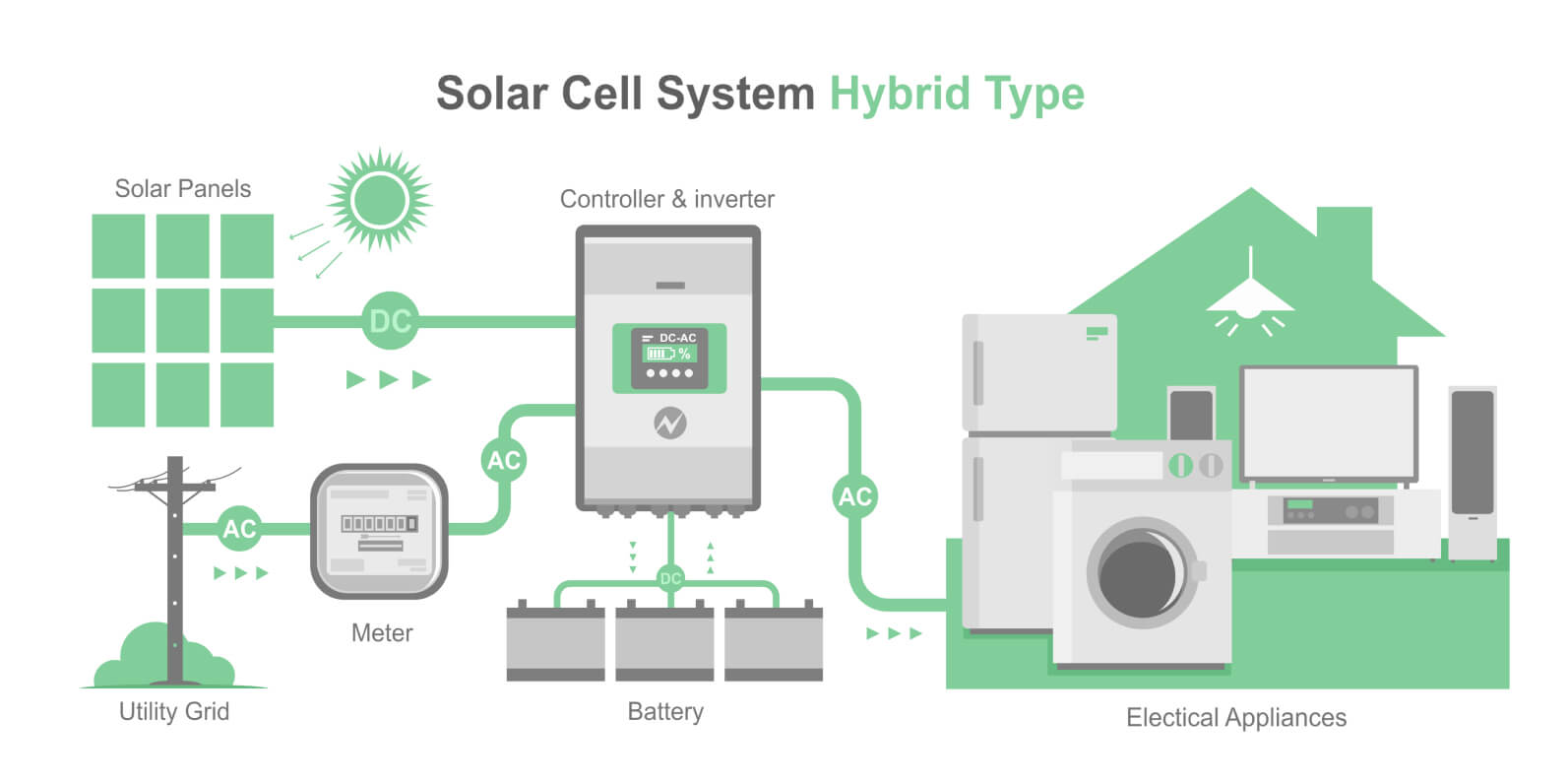Grid-tied systems are systems that connect solar power generation to the grid. Customers pay for excess electricity delivered to the power grid. Similarly, customers can pay for the units they use by drawing power from the grid when the system cannot produce enough power. The process of supplying electricity to the grid is called net metering. Some states allow you to feed all the electricity you produce into the national grid, this is called full metering.
As the name suggests, off-grid solar systems are off-grid. These systems work independently of each other and are not affected by electricity. The system uses batteries to store excess energy during the day and use it at night or when production is low. This is how the system looks.
A hybrid system is when your solar panels are still connected to the grid and have a backup battery to store excess energy. The advantage of the solar hybrid is that you always have electricity no matter what. With battery backup, excess energy from the solar panel (but not used by your home) is stored in the battery. Then the battery works for you at night, during bad working hours or in bad weather when there is no sun.


